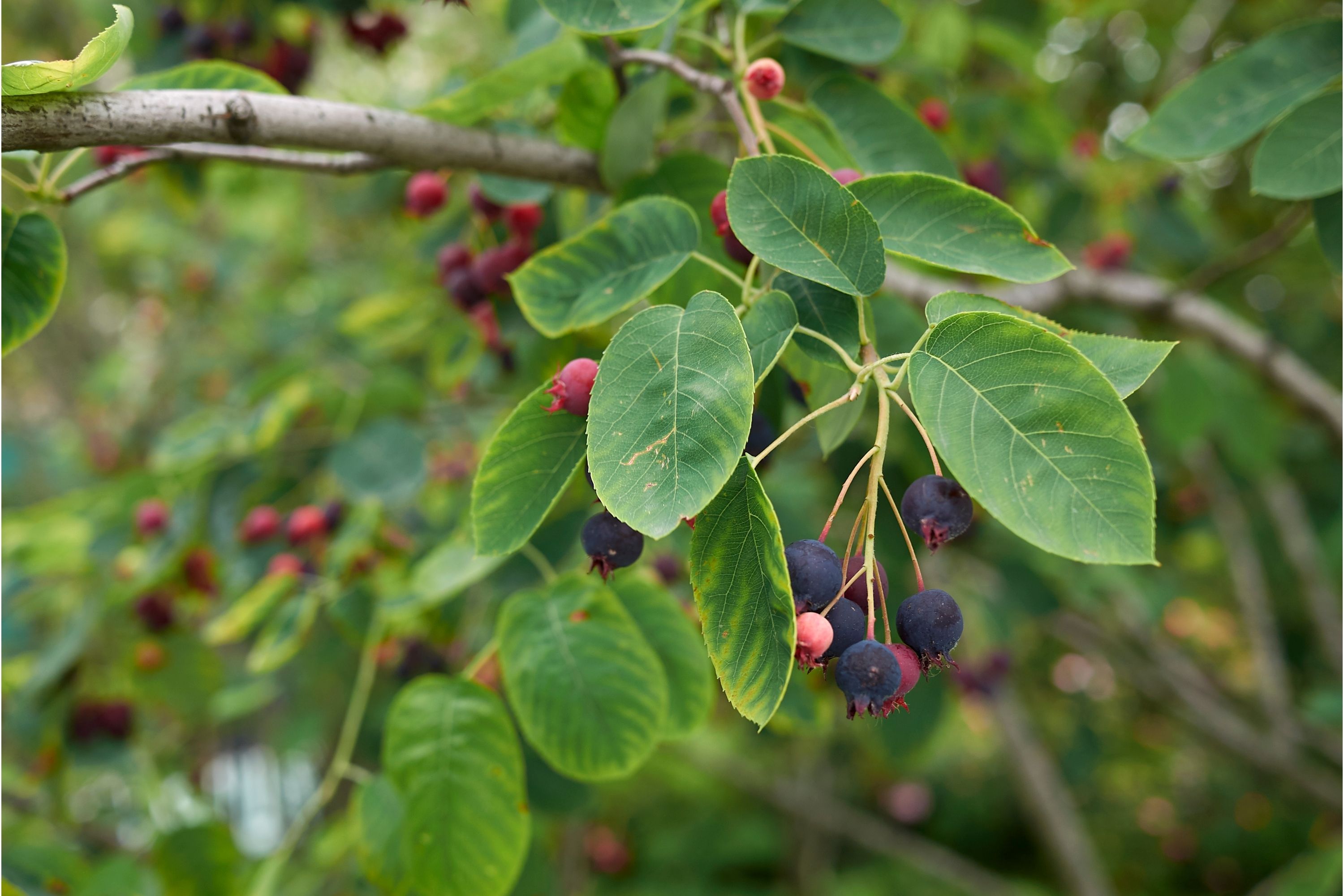Bilberry
(Amelanchier canadensis)

Description
Amelanchier canadensis (bilberry, Canadian serviceberry, chuckle-berry, currant-tree,juneberry, shad-blow serviceberry, shad-blow, shadbush, shadbush serviceberry, sugarplum, thicket serviceberry) is a species of Amelanchier native to eastern North America in Canada from Newfoundland west to southern Ontario, and in the United States from Maine south to Alabama. It is largely restricted to wet sites, particularly on the Atlantic coastal plain, growing at altitudes from sea level up to 200 m. It is a deciduous shrub or small tree growing to 0.5–8 m tall with one to many stems and a narrow, fastigiate crown. The leaves are alternate, simple, ovate to ovate-oblong, 1–5.5 cm long and 1.8–2.8 cm broad with a rounded to sub-acute apex; they are downy below, and have a serrated margin and an 8–15 mm petiole. The flowers are produced in early spring in loose racemes 4–6 cm long at the ends of the branches; each raceme has four to ten flowers. The flower has five white petals 7.6–11 mm long and 2–4 mm broad, and 20 stamens. The fruit is a pome, 7–10 mm diameter, dark purple when ripe; it is edible and sweet. Fruits become ripe in June and July in its native range. Amelanchier (/æməˈlænʃɪər/ am-ə-LAN-sheer),also known as shadbush, shadwood or shadblow, serviceberry or sarvisberry (or just sarvis), juneberry, saskatoon, sugarplum, wild-plum or chuckley pear,is a genus of about 20 species of deciduous-leaved shrubs and small trees in the rose family (Rosaceae). Amelanchier is native to temperate regions of the Northern Hemisphere, growing primarily in early successional habitats. It is most diverse taxonomically in North America, especially in the northeastern United States and adjacent southeastern Canada, and at least one species is native to every U.S. state except Hawaii and to every Canadian province and territory. Two species also occur in Asia, and one in Europe. The taxonomic classification of shadbushes has long perplexed botanists, horticulturalists, and others, as suggested by the range in number of species recognized in the genus, from 6 to 33, in two recent publications. A major source of complexity comes from the occurrence of hybridization, polyploidy, and apomixis (asexual seed production), making species difficult to characterize and identify.
Taxonomic tree:







